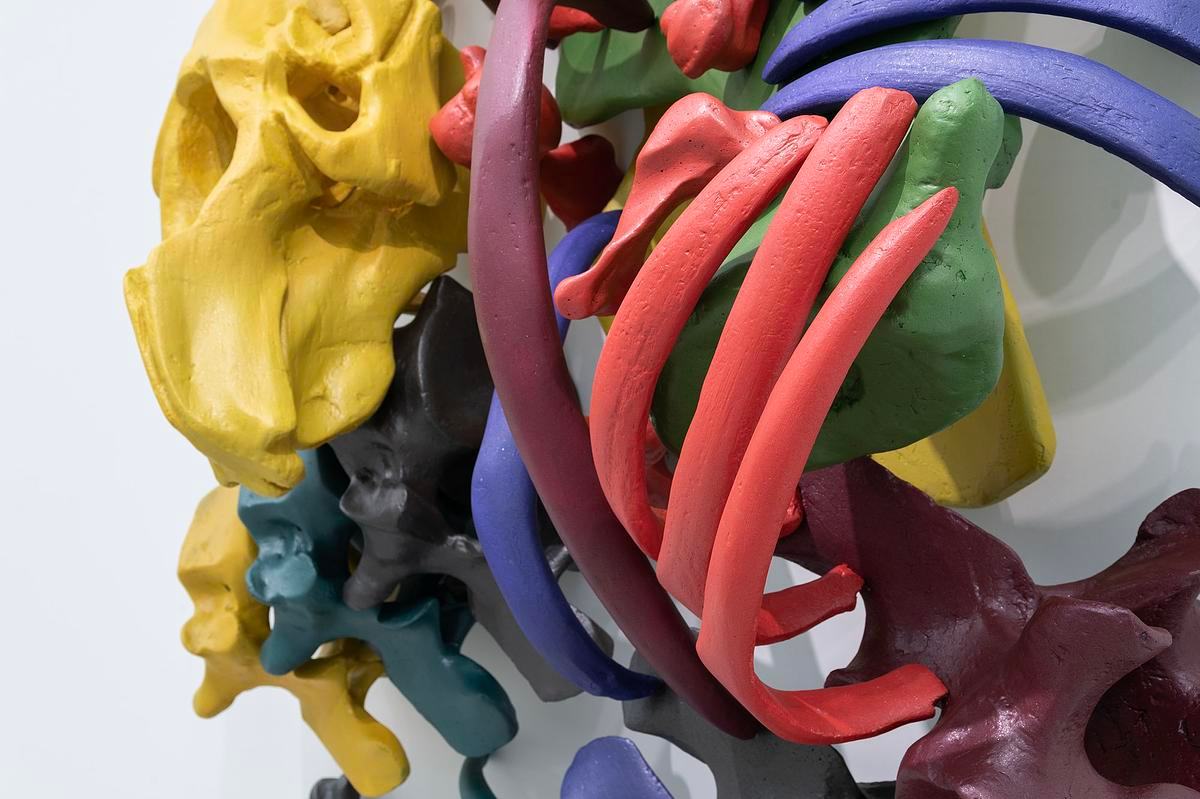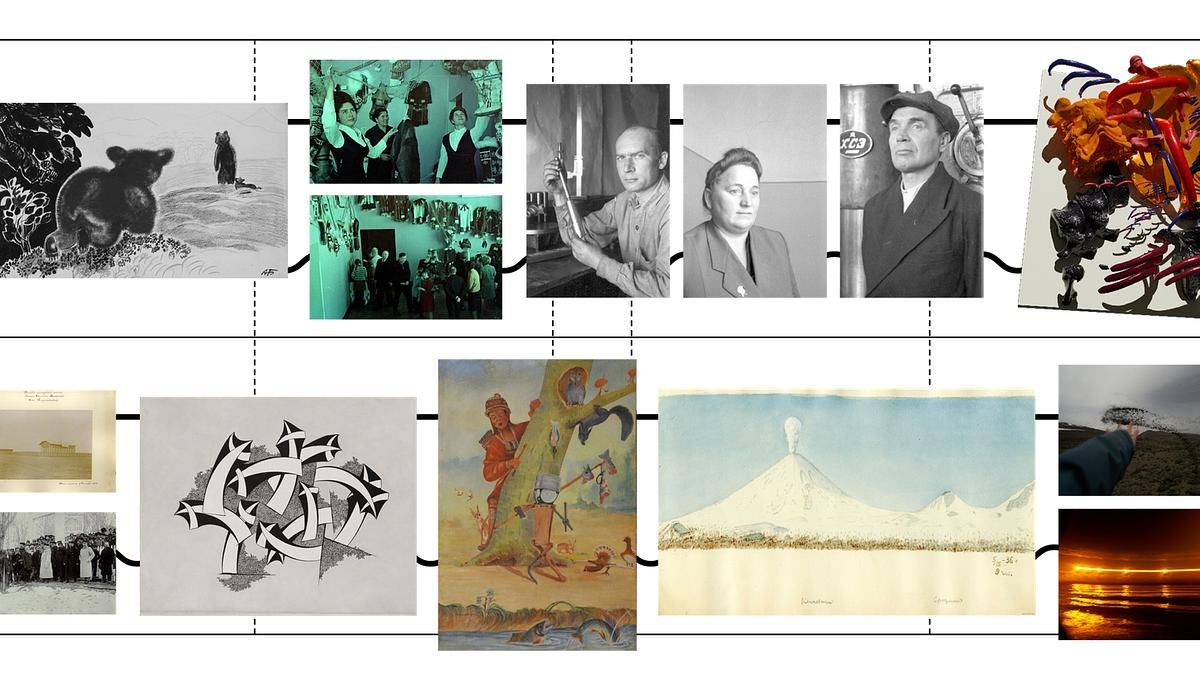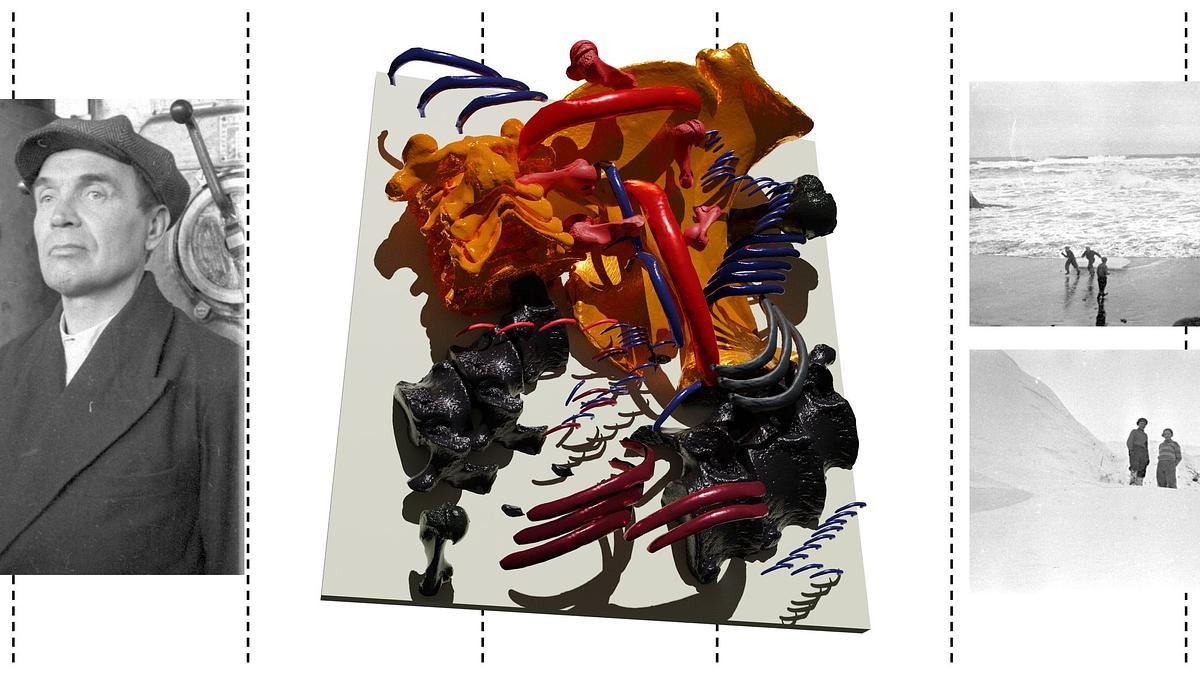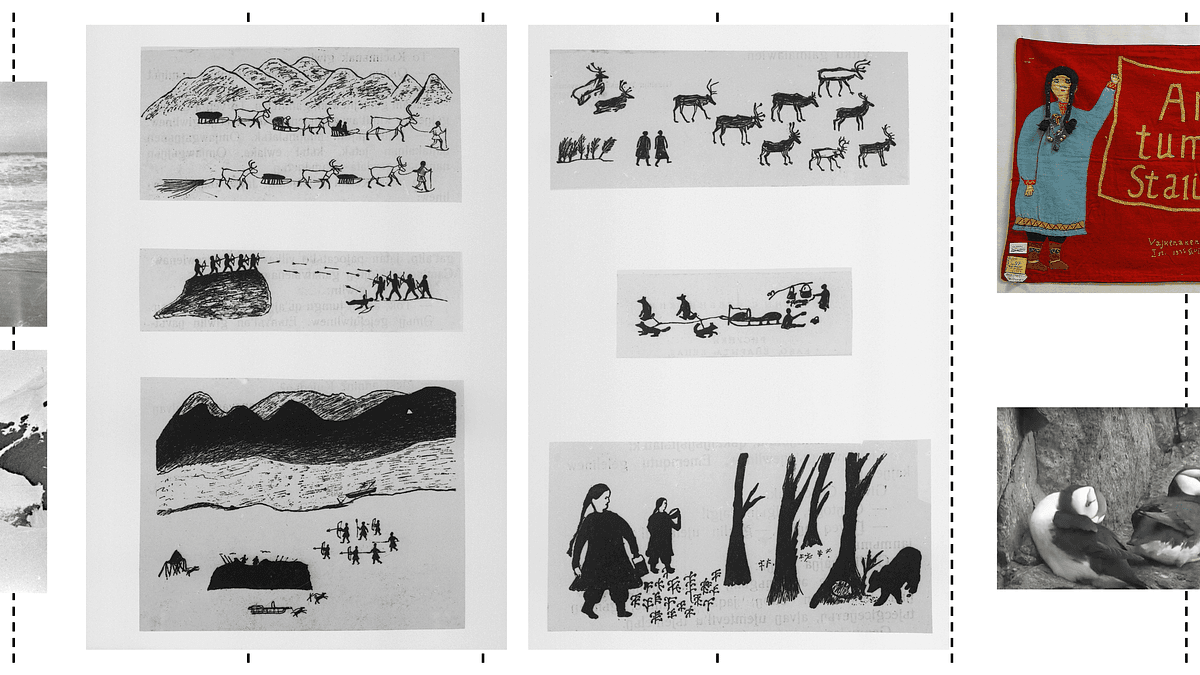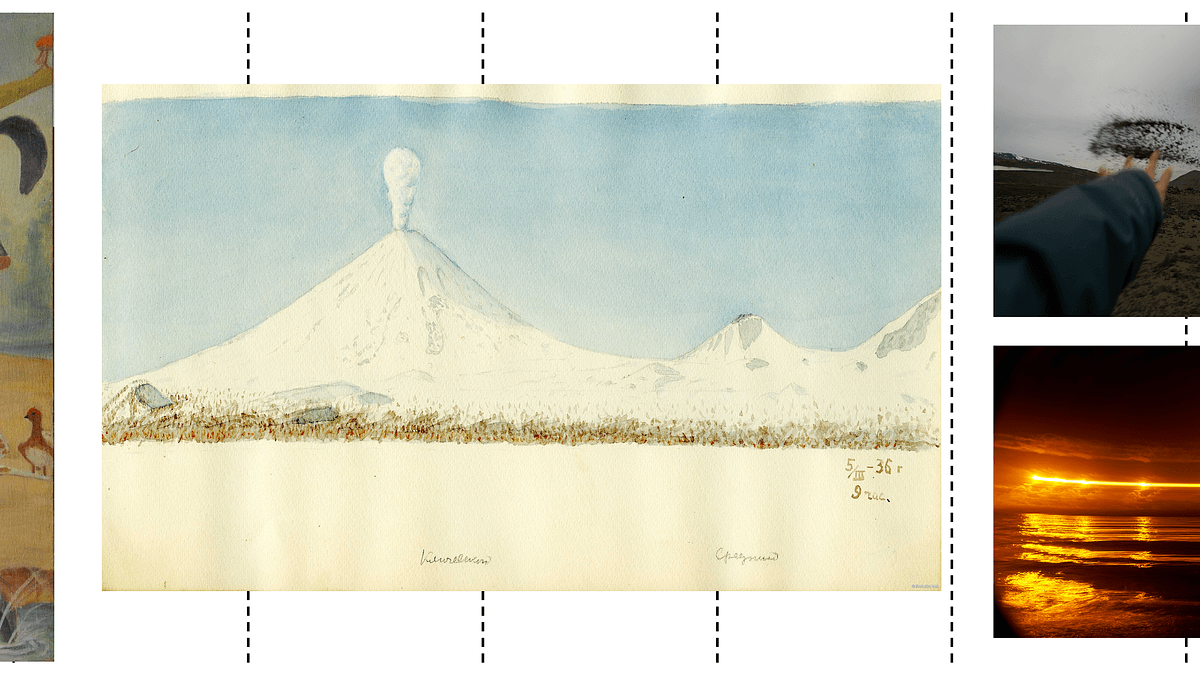
An exhibition reflecting on the phenomenon of Kamchatka Peninsula—its cultural, natural, and social landscape.
An exhibition reflecting on the phenomenon of Kamchatka Peninsula—its cultural, natural, and social landscape.
The Coastline Paradox develops the logic of the
The main metaphor of the exhibition is the image of a volcanic beach on the ocean shore. This is a place where major geological and climatic processes unfold, where countless living organisms coexist and struggle, where the interests of different people clash and coincide. The diversity of these forces creates a dynamic equilibrium that every constituent element seeks to disrupt. But they only do so in order to return to this balance once again.
This exhibition functions according to the same principle. Through a system of moving screens and shifting exhibits, The Coastline Paradox transforms several times, forming a succession of five independent parts—"waves": Ring of Fire, Remove Not Keep, Life Not Here, Language on the Brink, and Kamchatka Island. Ring of Fire invites us to think about how science and culture exist in extreme natural and climatic conditions. Remove Not Keep tells of the processes and logic of consumption of natural resources, the consequences of their depletion and the models of sustainable development that might maintain an equilibrium. Life Not Here looks at how residents of Kamchatka understand their own lives. Language on the Brink investigates the existence of language on the boundary with nature, other languages, and cultures. Kamchatka Island considers how local identity is formed and the methods used to portray it.
The Coastline Paradox brings together several types of exhibits. Works by invited artists and projects devised by other participants in the programme—members of public organisations, teachers, scientists, and ecologists are supplemented by objects from museum collections reflecting the multifaceted and contradictory process of studying, understanding, and publicly representing the Kamchatka region since the seventeenth century.
As well as the five “waves,” The Coastline Paradox includes a separate and unchanging section exhibiting works by the artists Filipp Krikunov and Sergej Longinov Itenmen. Both authors reflect on the practices of the Russian avant garde. Krikunov’s assembly Composition No. 2, made from models of bones from the Steller’s sea cow, a species driven to complete extinction by humans, takes a critical look at the characteristic avant-garde approach that focuses on the will and intention of the artist. Sergej Longinov Itenmen, an artist with Itelmen roots whose work investigates the history and culture of the indigenous population of Kamchatka, offers a different reading of the avant-garde heritage. Instead of humanity’s omnipotence and domination of the world, his work asserts the need for a conscious and utilitarian attitude towards all resources, including the remains of animals that were hunted to extinction.
The distinct approaches of these two artists represent different paths, and the choice between them is seen by the curators as one that stands before every person reflecting on the phenomenon of Kamchatka today. Choosing between one of these paths or a synthesis between them was the dilemma faced by the curators and participants in this project, and now, this dilemma is faced by viewers as well.
All photos: Daniel Annenkov
Authors and artists
Elizaveta Akselrod — N. Antonova — Aleksandr Belashov — Jacques Renaud Benard — Andrei Cherkasov — Dar Studio — Alina Desyatnichenko — DVR Group — Ale Dyakov — Dima Filippov — Gavriil Gaidukevich — Maria Gavrilova — Vladimir Joсhelson — Kirill Kilpalin — Athanasius Kircher — Friedrich Heinrich von Kittlitz — Filipp Krikunov — T. Kulikovskikh — Jean-Baptiste Le Prince — Sergej Longinov Itenmen — Lilith Matevosyan — Vladimir Mochalov — Oleg Orlov — Sergey Pasenyuk — Boris Pijp — Aleksandr Pritchin — Dmitry Shakhovskoy — Pyotr Sharapov — Valery Shishkov — Oleg Tersky — Jean-Baptiste Tilliard — Vasily Vatagin — Vladimir Vlodavets — Boris Zhirkov — Viktor Zvyagin — the Museum of Modern Art Kamchatka team (Polina Asaulova, Filipp Krikunov, Vyacheslav Mizin) — as well as authors and artists whose names were not recorded
Curators
Yaroslav Aleshin, Sergey Babkin, Alexandra Kiseleva, Alexandra Tumarkina
With the participation of
Tatiana Bobina, Varvara Chuchalina, Fillipp Krikunov, Anton Morozov, Yola Morozova (Zikratova)
Public programme curator
Galina Luppo
Producers
Maria Kalinina, Yana Romashkina, Angelina Vorona
Architecture
NORMA
Technical team
Andrey Belov, Artem Kanifatov, Maksim Lapshin, Mikhail Sarkisyants
Art logistics and registration
Angelina Korovina, Daria Krivtsova, Daria Maksimova
Lighting
Ksenia Kosaya
Accessibility and inclusion curators
Vlad Kolesnikov, Vera Zamyslova
Media specialist
Anastasia Galyan
The exhibition is organised with the participation of
All-Russian Decorative Art Museum
All-Russian State Television and Radio Broadcasting Company
Archive of the Institute of Volcanology and Seismology, Far Eastern branch of the Russian Academy of Sciences
Aleksandr Aleksandrovich Belashov
Tatiana Churikova and Boris Gordeychik
Fersman Mineralogical Museum
Film Museum
Gosfilmofond of the Russian Federation
Ivanovo Regional Art Museum
Kamchatka Regional United Museum
Sergej Longinov Itenmen (collection of the Foundation of the Culture and Art of the Itelmen People of Kamchatka)
net-film archive
Pavlovsk State Museum Reserve
Peter the Great Museum of Anthropology and Ethnography (Kunstkamera)
Russian Academy of Sciences
Russian Museum of Ethnography
Sovteleexport Foreign Economic Association
State Darwin Museum
State Historical Museum
State Museum of Contemporary History of Russia
State Russian Museum
Timiryazev State Museum of Biology
Information partners:

